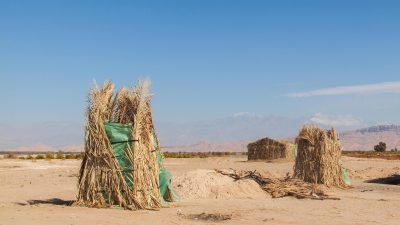When India And China Became Battlegrounds Of Death
1. The Unfolding of a Nightmare: The Outbreak of the Third Plague Pandemic
The Third Plague Pandemic, beginning in 1855, emerged as a catastrophic event that shook the foundations of India and China. Originating in the Yunnan province of China, the deadly Yersinia pestis bacterium wreaked havoc, leaving devastation in its wake. This pandemic was not merely an outbreak; it was a relentless force that spread terror, shattered communities, and altered history.
Unlike the earlier plagues, this wave persisted for decades, spanning continents and killing millions. The rapid spread was attributed to poor sanitation, increasing global trade, and the movement of infected rats and fleas through bustling port cities. The disease took hold in overcrowded regions, where it thrived due to a lack of medical intervention and public awareness.
2. The Role of Globalisation: How Trade and Colonisation Fueled the Plague
By the mid-19th century, trade routes between China, India, and other colonial territories had expanded significantly. With British imperial rule facilitating movement across continents, the plague found a perfect host in the dense urban centres of Bombay, Calcutta, and Hong Kong. Maritime trade played a crucial role in its transmission, allowing infected rodents and fleas to spread the bacteria across oceans and into new regions.
India, under British control, suffered immensely due to inadequate public health measures. Colonial authorities failed to grasp the severity of the crisis, dismissing early warnings and failing to implement immediate quarantine measures. Meanwhile, China, struggling with political instability, was unable to mount an organised response, leading to further devastation in key trade cities like Canton and Shanghai.
3. The Deadly Toll: Casualties, Statistics, and the Human Cost
- Death Toll: Over 12 million people perished in India alone, while millions more succumbed across China and Southeast Asia. The true figures might be even higher due to underreporting.
- Infection Rate: Entire communities were wiped out, with case fatality rates exceeding 60% in some regions.
- Urban Centres Hit Hardest: Cities like Bombay, Hong Kong, and Canton faced unparalleled mortality rates, with bodies piling up faster than they could be buried.
- Medical Personnel Overwhelmed: With limited resources, doctors and scientists struggled to understand the plague’s transmission, leading to mass hysteria and ineffective containment efforts.
4. Medical Science in Chaos: The Slow Path to Understanding the Plague
Despite centuries of battling the plague, the 19th-century medical community was still perplexed by its nature. Miasma theory, which suggested that diseases were spread through “bad air,” was still widely believed, delaying efforts to control the actual transmission pathways. It wasn’t until Alexandre Yersin’s 1894 discovery of the Yersinia pestis bacterium that scientists finally understood its true cause.
However, the late discovery of the bacterium meant that early containment strategies were futile. Poorly planned disinfection campaigns, ineffective quarantines, and misguided attempts to cull animals did little to halt the spread. Without antibiotics, the infected had little chance of survival, leading to mass fatalities.
5. Public Fear and Mass Panic: The Social and Psychological Impact
The mere mention of the plague sent shockwaves through society. Infected individuals were often isolated or violently removed from their homes as communities sought to prevent further contagion. In India, colonial authorities conducted aggressive containment measures, including forced evictions, home burnings, and travel restrictions, further alienating the local population.
In China, fear of the disease led to widespread discrimination against affected communities, with entire villages being sealed off and their inhabitants left to die. Superstitions ran rampant, with many believing that the plague was a divine punishment or a curse. The psychological toll was immeasurable, as families were torn apart, entire neighbourhoods abandoned, and survivors left with deep trauma.
6. Government Failures and Colonial Indifference: A Tragedy Exacerbated
The British colonial administration in India was alarmingly slow in responding to the crisis. Rather than addressing sanitation issues and overcrowding, their initial focus was on protecting trade and economic interests. In Bombay, the government imposed draconian plague regulations, allowing British officers to enter homes, separate families, and even forcibly hospitalise suspected victims.
These measures were deeply resented by the Indian population, leading to protests, riots, and resistance against British rule. Instead of fostering cooperation, colonial authorities escalated tensions, deepening the divide between rulers and the local populace. The lack of empathy and strategic planning resulted in unnecessary deaths, making the crisis far worse than it could have been.
7. Lessons Learned and the Legacy of the Third Plague Pandemic
- Scientific Breakthroughs: The pandemic paved the way for crucial discoveries, such as the role of fleas in plague transmission, ultimately leading to more effective control measures.
- The Birth of Public Health Initiatives: In response to the devastation, governments worldwide began investing in sanitation, quarantine procedures, and disease monitoring systems.
- Political Ramifications: The mishandling of the crisis fuelled anti-colonial sentiments in India, contributing to the eventual rise of independence movements.
- Development of Plague Vaccines: Though initial attempts at vaccination were met with resistance, they laid the groundwork for modern plague treatments that continue to be studied today.
8. A Disaster That Shaped the Future: The Pandemic’s Impact on Modern Epidemiology
The Third Plague Pandemic, despite its horrors, transformed the medical and scientific world. By the early 20th century, researchers had identified key strategies to combat such outbreaks, leading to significant advancements in epidemiology. The lessons learned helped shape responses to later pandemics, from the Spanish Flu to COVID-19.
The tragedy also underscored the importance of early intervention, accurate medical research, and the need for global cooperation in tackling infectious diseases. While the scars of the 19th-century plague remain in history, its impact on medical science continues to save lives today.
9. Could It Happen Again? The Threat of Modern-Day Plague Resurgence
Despite advancements in medicine, the threat of the plague is not entirely gone. Outbreaks still occur in remote regions, and with globalisation, a new pandemic is never out of the question. The factors that allowed the Third Plague Pandemic to thrive—poor sanitation, rapid urbanisation, and inefficient governance—still exist in many parts of the world.
Recent outbreaks in Madagascar, China, and the United States serve as reminders that the plague is not a relic of the past. With antibiotic resistance on the rise, experts warn that a new deadly strain could emerge, catching the world off guard once again.
10. Final Thoughts: A Warning from the Past
The Third Plague Pandemic was one of the deadliest health crises in recorded history, demonstrating how unprepared societies can fall victim to nature’s wrath. It exposed failures in governance, deepened colonial tensions, and left a lasting impact on global health policies.
As we move forward, the lessons of this tragic event must not be forgotten. Vigilance, investment in healthcare, and international cooperation remain crucial in preventing history from repeating itself.
FAQs
1. What caused the Third Plague Pandemic?
The pandemic was caused by Yersinia pestis, a bacterium transmitted by fleas that infected rats and later spread to humans.
2. How many people died during the Third Plague Pandemic?
It is estimated that over 12 million people perished in India, with millions more dying in China and beyond.
3. How did the plague spread so rapidly?
Trade, urbanisation, and colonial expansion facilitated the movement of infected rodents, fleas, and people across borders.
4. Was there a cure available at the time?
No. The plague was not fully understood, and antibiotics were not yet discovered. Infected individuals had a high chance of death.
5. Can the plague return today?
Yes. Though rare, cases still occur, especially in remote areas. Antibiotics can treat it, but concerns about resistance remain.




